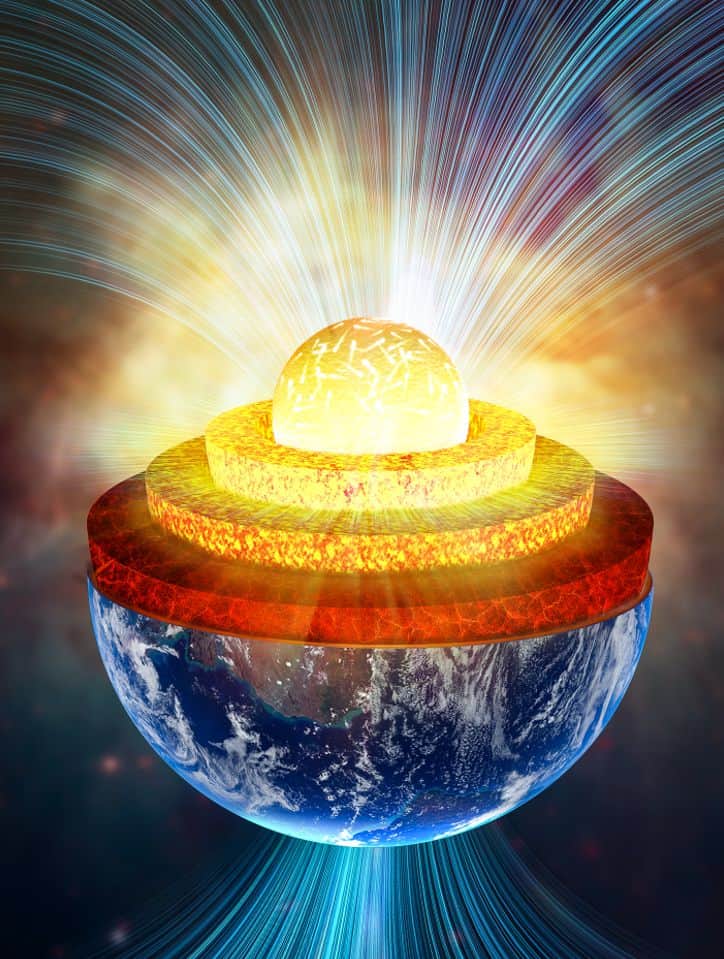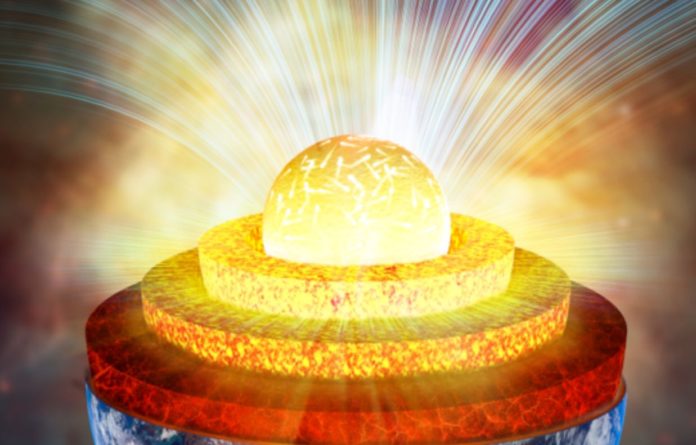The Earth’s core, the deepest region of our earth, is characterized by extraordinarily high pressure and temperature. It is made up of a solid inner core and a liquid outer core.
The inner core is created and expands as liquid iron solidifies at the inner core barrier. The inner core is less dense than pure iron, and it is thought that certain light elements are there.
The inner core of the Earth, according to a joint research team led by Prof. HE Yu of the Chinese Academy of Sciences’ Institute of Geochemistry (IGCAS), is made up of a solid iron sublattice and liquid-like light elements, which is known as a superionic state. Under inner core conditions, the liquid-like light elements are very diffusive in iron sublattices.
In the inside of planets, a superionic state exists, which is an intermediate state between solid and liquid. Researchers from IGCAS and the Center for High Pressure Science & Technology Advanced Research (HPSTAR) discovered that under inner core conditions, some Fe-H, Fe-C, and Fe-O alloys transformed into a superionic state using high-pressure and high-temperature computational simulations based on quantum mechanics theory.

In superionic iron alloys, light components become disordered and spread across the lattice like a liquid, whereas iron atoms remain ordered and vibrate around their lattice grid, forming the solid iron framework. C, H, and O diffusion coefficients in superionic iron alloys are identical to those in liquid Fe.
“It is quite abnormal. The solidification of iron at the inner core boundary does not change the mobility of these light elements, and the convection of light elements is continuous in the inner core,” says Prof. HE Yu, the first and corresponding author of the study.
The fact that the inner core is mushy and has a low shear wave velocity has long been a mystery. The seismic velocities in these superionic iron alloys were calculated, and the researchers discovered a substantial drop in shear wave velocity.
“Our results fit well with seismological observations. It is the liquid-like elements that make the inner core soften,” adds co-first author SUN Shichuan.
Seismic velocities can be affected by very diffusive light components, providing crucial clues to other mysteries in the inner core. The superionic model can explain the anisotropic structure, seismic wave attenuations, and structural changes of the inner core over the decades by examining the distribution and convection of these liquid-like materials in the inner core.
Source: 10.1038/s41586-021-04361-x
Image Credit: IGCAS
You were reading: Earth’s inner core also has “quite abnormal” and light elements that diffuse like liquid
